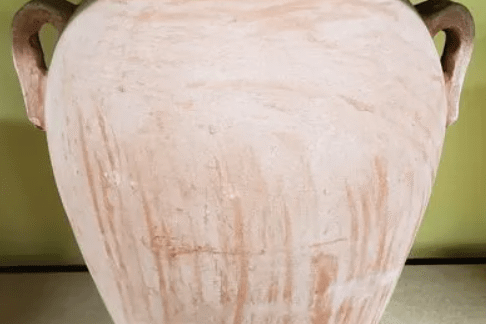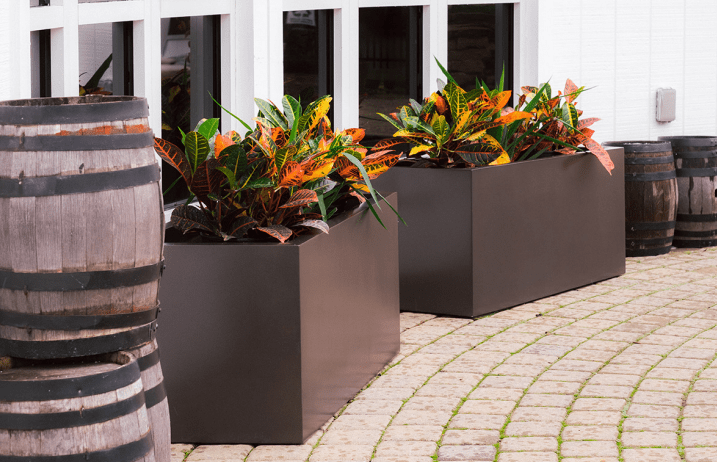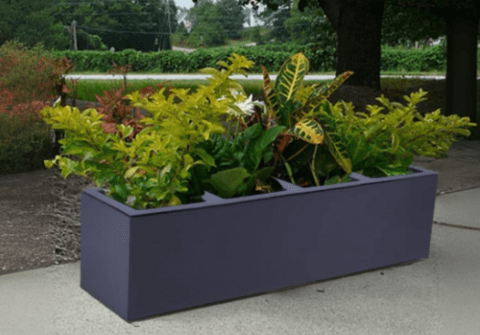
Explore the planter materials redefining outdoor and indoor design aesthetics, and why fiberglass continues to lead the way.
Home and landscape design continues to evolve in 2025, with more people opting for materials that not only look great but also hold up over time. For professional designers, planter selection has become more than a finishing touch; it’s a deliberate part of the design architecture. The right material doesn’t just house a plant; it enhances the surrounding space, sets a tone, and reinforces the aesthetic of the overall project.
If you’re selecting planters for residential patios, commercial courtyards, hospitality projects, or rooftop gardens, understanding today’s top planter materials will help you make confident, long-lasting choices. Below, we explore the leading materials that designers are gravitating toward in 2025 and explain why fiberglass planters remain at the top of the list.
The Importance of Choosing the Right Planter Materials
Planters aren’t just vessels for greenery. They affect color balance, texture, spatial flow, and user experience in both indoor and outdoor environments. Using the wrong material can lead to cracking, fading, or an awkward bulk that detracts from the design. The right material supports durability, clean design lines, and ease of use.
As sustainability, resilience, and minimalist elegance dominate design trends in 2025, professionals are leaning into planter materials that align with both environmental values and aesthetic vision. Let’s break down the pros and cons of the top planter materials designers are using this year.
Fiberglass: The Modern Designer’s Favorite
In 2025, fiberglass remains the standout material among planter options for professionals working on residential and commercial projects. Its ability to balance strength, style, and versatility makes it a reliable go-to for both interior and exterior applications.
Why Designers Love Fiberglass Planters:
- Lightweight Yet Durable: Unlike concrete or stone, fiberglass is easy to install and relocate, particularly in tight spaces such as rooftops, balconies, or commercial areas.
- Weather- and UV-Resistant: Built for performance in harsh environments, fiberglass won’t fade, crack, or warp in extreme conditions.
- Refined Appearance: Smooth surfaces and clean lines support minimalist, modern, and transitional aesthetics. Available in matte, satin, and specialty finishes.
- Customizable: Comes in a wide variety of shapes, sizes, and colors, perfect for matching branding guidelines or architectural palettes.
- Low Maintenance: The non-porous surface resists stains and mildew, making it ideal for high-traffic and low-maintenance areas.
From boutique hotel entryways to modernist residential patios, fiberglass planters offer unmatched adaptability and visual cohesion. For landscape designers in particular, the flexibility of scale and color makes fiberglass a top material when working across varied site conditions.
Concrete: The Industrial Classic
Concrete remains a favorite for brutalist and industrial-inspired projects. Its heavy, solid presence anchors large spaces and pairs beautifully with neutral landscaping schemes.
Pros:
- Strong and long-lasting
- Natural, raw texture
- Excellent for high-wind areas due to weight
Cons:
- Extremely heavy and difficult to move
- Prone to cracking in freeze-thaw cycles
- Can stain easily without sealing
While concrete has its place, especially in commercial zones or modernist exteriors, many designers are turning to fiberglass planters as a lightweight alternative that mimics concrete finishes without the physical strain or fragility.
Corten Steel: The Architectural Statement
Corten steel planters create a dramatic, rusted appearance that evolves. Frequently used in high-end commercial projects or desert-inspired gardens, this material is all about bold texture and tone.
Pros:
- Unique weathered patina that adds depth
- Durable and long-lasting once oxidized
- Great for industrial and contemporary designs
Cons:
- Expensive and slow to develop finish
- Can stain surrounding surfaces if not managed
- Limited color range and not suitable for all plant types
Designers who want a Corten look without the drawbacks often choose fiberglass planters in faux metal finishes. These offer visual impact with fewer limitations.

Wood: Organic and Natural
Wooden planters remain a popular choice in rustic, cottage, and transitional outdoor spaces. Their warmth and natural grain add softness to hardscapes, contrasting well with architectural lines.
Pros:
- Warm, organic appearance
- Sustainable options available
- Can be customized or built in place
Cons:
- Requires sealing and regular maintenance
- Not ideal in humid or wet climates
- Limited longevity compared to synthetic materials
Designers often reserve wood for shaded or protected areas, and many now opt for fiberglass planters that emulate wood tones while eliminating concerns about rot and maintenance.
Ceramic and Terracotta: Timeless but Fragile
Terracotta and ceramic remain popular choices for their timeless charm and natural tones. Homeowners and preservationists still use these traditional planter materials in smaller-scale residential settings and historic restorations. Their hand-crafted appeal suits eclectic and Mediterranean designs.
Pros:
- Rich, artisan texture
- Natural breathability for roots
- Available in glazed or unglazed finishes
Cons:
- Highly fragile and prone to cracking
- Heavy and awkward to transport
- Not suitable for commercial or high-traffic areas
For designers working on modern projects, ceramic and terracotta are often too delicate and stylistically narrow. Many now look to fiberglass as a cleaner, stronger alternative that still allows visual softness when finished properly.

The 2025 Verdict: Fiberglass Leads in Form and Function
In today’s fast-paced design world, the ability to deliver style and performance in a single product is critical. That’s why fiberglass continues to dominate the conversation about planter materials among landscape and home designers in 2025. It adapts to a wide range of aesthetics—from Scandinavian minimalism to tropical modernism—and outperforms most other materials in terms of longevity and ease of use.
Designers appreciate its architectural clarity, especially in commercial or urban contexts where form and function must work together seamlessly. As biophilic design continues to grow, fiberglass offers a reliable platform for integrating greenery into modern life.
Pottery King: A Trusted Source for Fiberglass Planters
At Pottery King, we understand the needs of professional designers. That’s why we specialize in fiberglass planters that offer the durability, flexibility, and design integrity required in both residential and commercial environments.
Whether you’re sourcing minimalist cube planters for a modern office, trough planters for a retail courtyard, or custom-colored bowls for a resort installation, our collection offers scalable, design-forward solutions.
We work directly with landscape architects, home designers, contractors, and property managers to deliver planters that fit the space and stand the test of time.
Ready to Design with Better Planter Materials?
If you’re planning your next design project and want planter materials that work just as hard as you do, fiberglass is the wise choice. Lightweight, stylish, and virtually maintenance-free, it provides the versatility today’s design professionals require.
Inquire today about Pottery King’s fiberglass planters and discover how easy it is to bring your vision to life with a material that blends beauty, resilience, and adaptability. Let’s shape outdoor spaces that last.




